Wine holds a special place in Argentine culture, gracing every table from casual lunches to grand dinners. Whether it’s during dinner, before going out, or even at lunch, Argentinians will pour their guests a big glass of wine. While Malbec often steals the spotlight, Argentina’s vineyards offer a wealth of other exceptional varieties worth exploring. There are many different types of wine to explore. Discover the preferred choices and where to try them out.
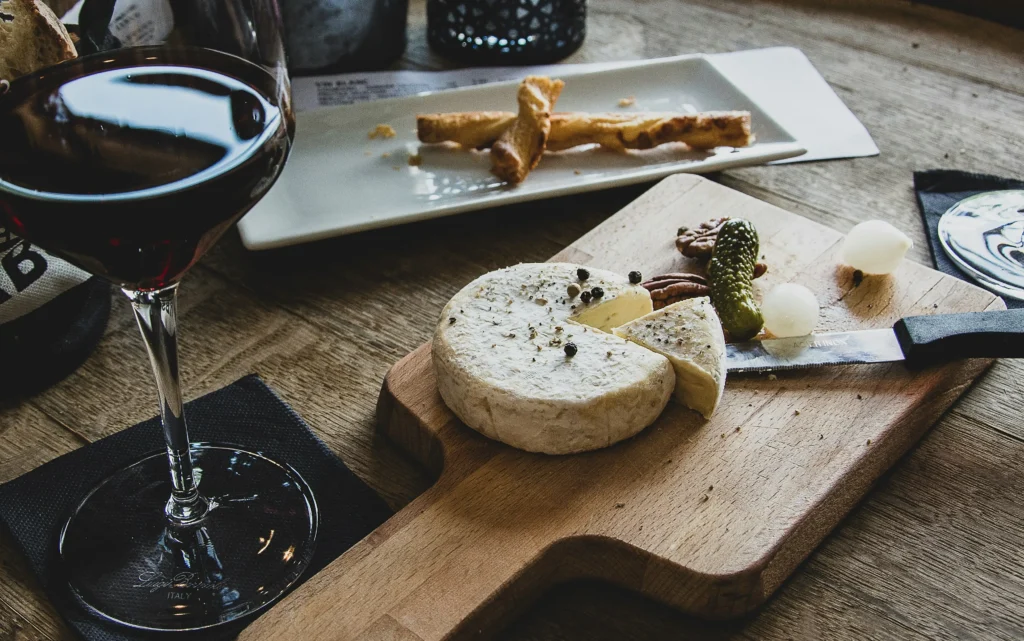
Argentine Wines: What else to drink beyond Malbec?
In Argentina, wine is more than just a beverage; it’s a symbol of hospitality and celebration. In a traditional Argentine Sunday lunch, we grab our corkscrews and share the first of many glasses with our dearest, while we wait for the barbecue to be ready. It’s asado’s best friend, and whenever we are having empanadas, a cup of wine is close to the plate. While Malbec remains Argentina’s signature variety, the country’s wine regions boast an impressive variety of alternatives that deserve attention.
Argentina’s Wine Regions
The majestic Andes Mountains dominate Argentina’s western landscape, defining not only the country’s geography but also its viticultural landscape. Mendoza, nestled in the center-east of the country, stands as the epicenter of Argentine winemaking. Mendoza region’s high altitude vineyards benefit from abundant sunshine and well-drained soils, creating the perfect conditions for producing world-class wines. The Uco Valley, in particular, is home to many of Argentina’s most esteemed producers.
In the east, there is something called the Wine Route, a scenic path where travelers can visit a variety of vineyards and sample an assortment of delicious wines. For the adventurous looking to do some wine tourism, bike tours offer a unique way to experience the region’s offerings, stopping at wineries to savor each glass of trademark Argentinian wine.
From Mendoza, the wine journey extends northward to San Juan, Salta, Tucumán, La Rioja, and Catamarca. Each province contributes its distinct character to Argentina’s rich array of red and violet elixirs.
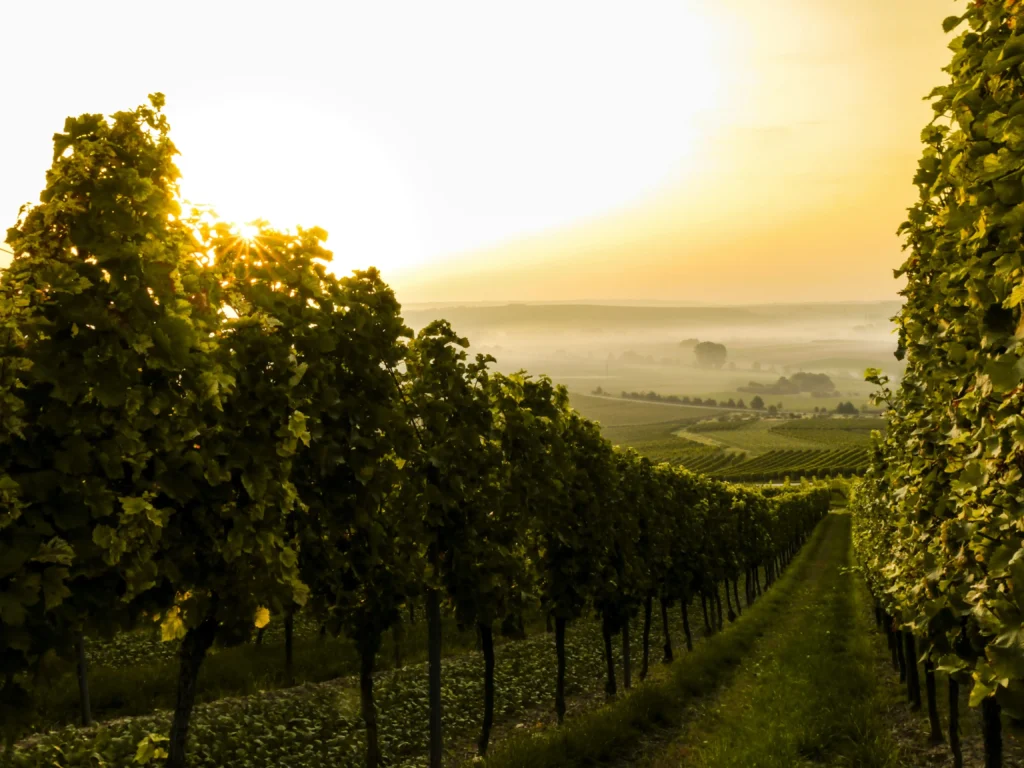
Signature Argentine Wines
When tasting some of the best wines in the world, it’s important to know what to ask for besides a good Argentinian Malbec wine. Having a list of recommendations can be helpful when choosing the right option. The variety of wines in a Buenos Aires winery is extensive. Here are the top-notch bottles (and grapes) that can be found in the best wine bars:
Malbec, a Must on your table
When it comes to this beverage, it’s always key to pay attention to its density (known as the body of the wine), acidity, and fruitiness. Malbec wine, Argentina’s flagship varietal, is a staple in every wine bar. Known for its deep fruit flavors, mildly acidity and velvety texture, Malbec is approachable yet complex. It strikes a harmonious balance between density and lightness, making it an ideal choice for newcomers. Whether paired with asado or empanadas, Malbec’s robust character shines through.
Cabernet Sauvignon, the sophisticated contender
Cabernet Sauvignon, the runner-up to Malbec, boasts a bold and robust profile. It is known for being the most bitter of them all. With its dense body and flavors of ripe black fruit, this grape variety offers a lingering finish that can be savored long after the last sip. Sauvignon blanc, the star of the white wines, it’s also very common. Its astringency and elegance make it a perfect companion for hearty beef dishes or white meats.

Tempranillo, the early bloomer
Tempranillo means “the little early one”. People often think the name is given because the wine is young and hasn’t been aged in wooden barrels, but it’s actually because the grape variety blooms very rapidly. Is a vibrant red wine with a youthful, fruity character. Its ruby-red hue and violet notes are complemented by a fresh, slightly bitter finish. Ideal for pairing with game meats such as rabbit or lamb stews, Tempranillo offers a delightful taste of Spain’s influence on Argentine viticulture.
Syrah, the fruity marvel
Named after the Persian word “Siah,” meaning black, Syrah is known for its deep, fruity flavors reminiscent of cherries, raspberries, and plums. With a mild acidity and dense mouthfeel, Syrah pairs beautifully with barbecued meats like roasted lamb or pork and strong cheeses like gorgonzola and gouda, due to the contrast between the sweetness of the sip and the intensity of the cheeses. It also complements rich pasta sauces, making it a versatile choice for many dishes.
Pinot noir, the elegant choice
Pinot Noir stands out for its light body and high acidity. Its flavor profile includes red fruits such as cherries and raspberries, often with notes of fresh herbs or violets and rose petals, depending on the amount of time it was aged in oak barrels. This elegant wine is a perfect match for seafood dishes, including octopus and shellfish, adding a touch of sophistication to any meal.
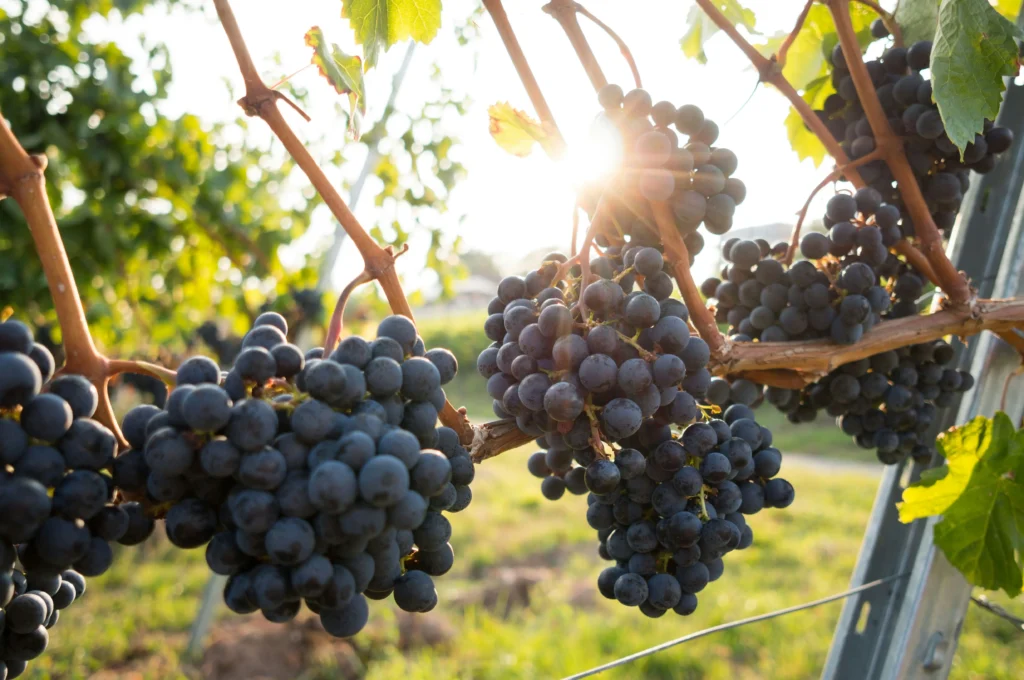
Best Places to Try Wine in Buenos Aires
Just like a good wine gets better with age, finding the perfect place to enjoy takes time. Fortunately, that task has been covered. Here are the best spots to savor the most delightful wines in Buenos Aires:
Naranjo Bar, Chacarita
Chacarita holds a lot of thrilling activities since it’s one of Buenos Aires’ oldest and trendiest neighborhoods. After taking a tour of the Cementerio de la Chacarita, Chacarita’s cemetery, the resting place of notable figures -like Carlos Gardel, the legendary tango singer, and Osvaldo Pugliese, the revolutionary tango composer, there’s nothing like a relaxing glass of wine at Naranjo Bar to come back to life.
It’s located just five blocks away, at Ángel Justiniano Carranza 1059. Its cool interiors resemble those of a warm home. With its inviting light, it will make anyone thirsty to stay. The menu offers a wide range of natural and organic fine wines, which can be enjoyed with their small and meticulously crafted plates. Vegetarians will appreciate the homemade hummus, mushrooms, and plant-based tapas. Wine-wise, the best idea is to listen to the staff, who’ll know how to guide wine enthusiasts. One thing’s for sure: there’s much more than Malbec at Naranjo.
Criolla Wine Tasting
At Criolla Cooking and Wine, located at Gorriti 4832, an incredible experience awaits. An interactive wine tasting, guided by a sommelier, offering insights and answering questions about Argentinian wines to help new-comers become masters in the field. It’s a sophisticated yet fun experience to enjoy with friends and colleagues, while sampling some of the best Argentine wines.
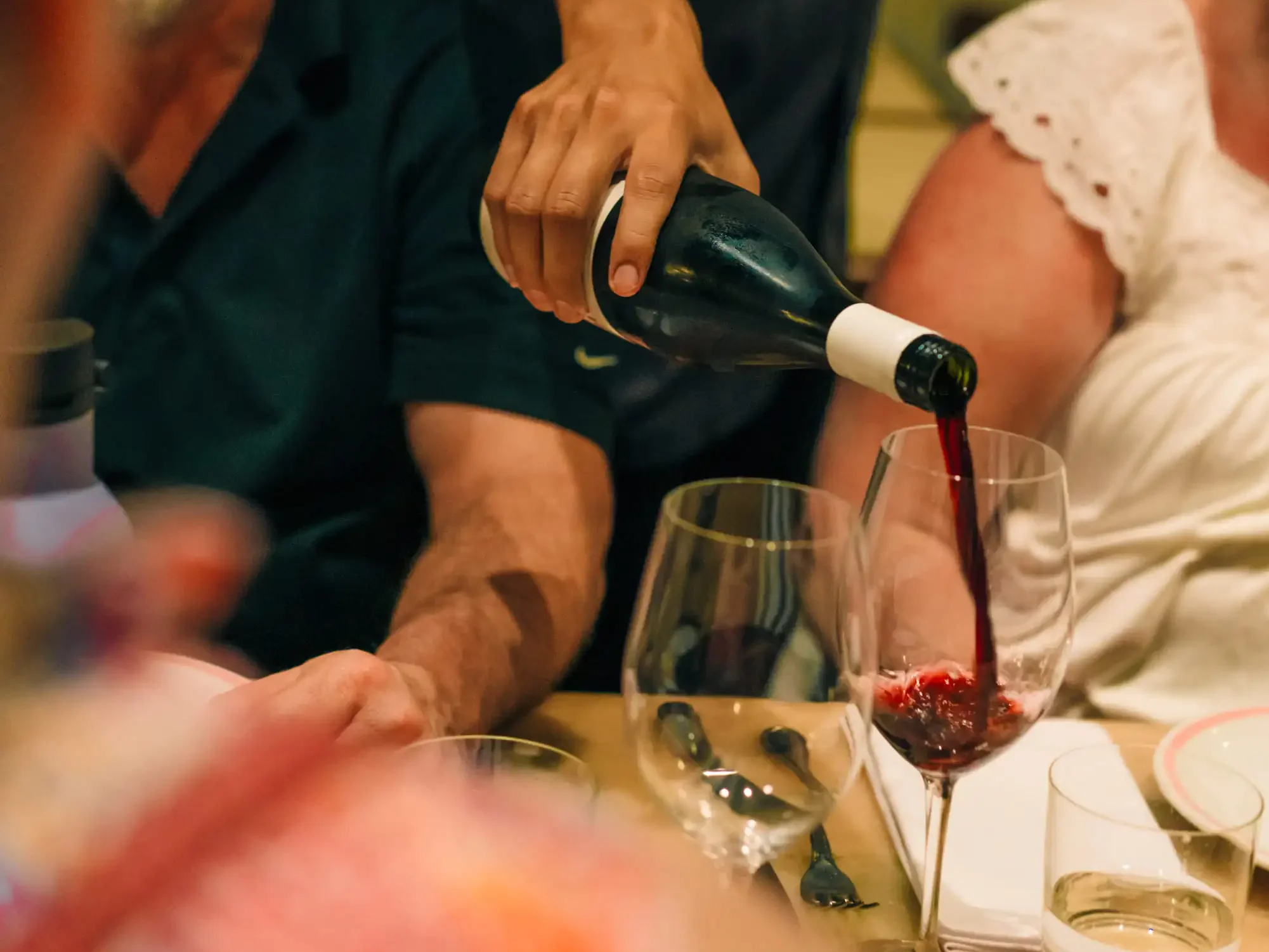
Anchoita cava
Located in Chacarita, Anchoita Cava is a Michelin-starred gem renowned for its exquisite selection of Argentine wines from all over the country. This cava is renowned for its delicious locally produced cheeses, which guests can choose right there from a wide display. Their charcuterie pairs perfectly with astringent wines, and remember that cheeses are best enjoyed with Pinot Noirs and Tempranillos. Also a must-try: the stuffed chipa.
La Malbequeria
As its name suggests, La Malbequería honors the most popular wine of them all, Malbec. But it’s more than that: La Malbequería is a steakhouse where, in addition to choosing from a list of over 400 wines, customers can enjoy delicious grilled meat prepared by some of the best cooks in the country, aged for about 15 to 21 days to achieve an unforgettable flavor. To visit La Malbequería and other hidden jewels in the area, a food tour of Palermo might be the best choice.
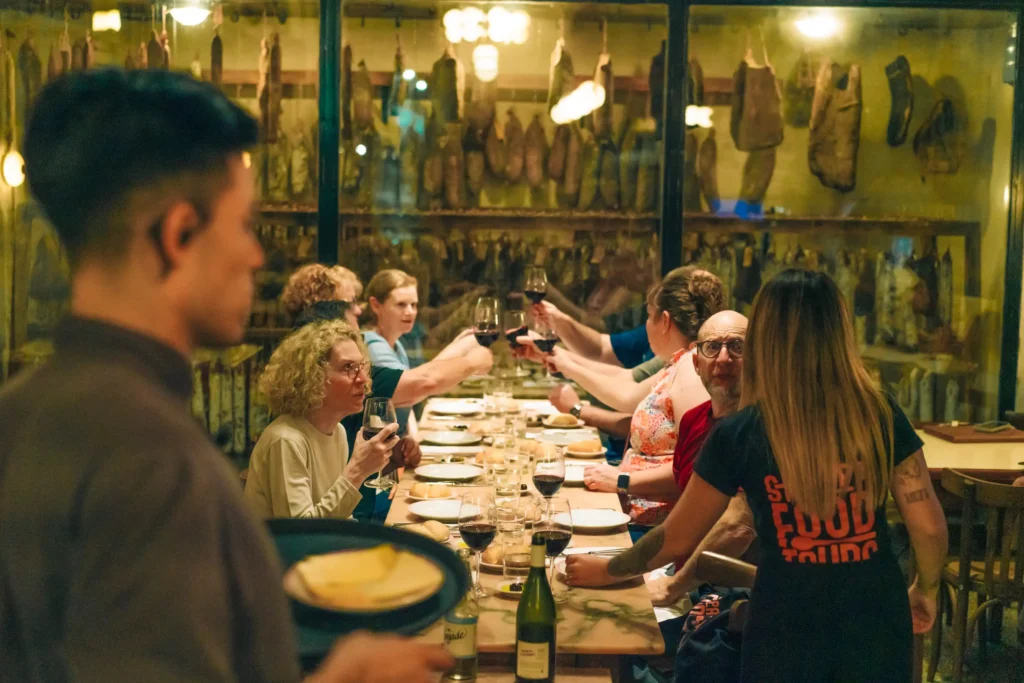
Pain et Vin
Pain et Vin, which means bread and wine, are an essential basis of any culture. And this family-owned and operated restaurant knows this well. Located in the heart of Palermo, at Gorriti 5132, this winery offers an array of delightful dishes perfect for sharing and, most importantly, a long selection of great wines to taste. From Wednesday to Sunday, starting at 4:30 PM, they offer a tasting session where oenophiles can try more than three different wines, paired with cheese and bread, all at a very affordable price.
La Vinícola
In the heart of Palermo Soho, Buenos Aires’ gastronomic hub and home to the city’s finest restaurants, La Vinícola stands out as a top wine bar offering a cozy and personalized experience as one of the 10 top wine bars in Buenos Aires. Known for its high-quality selection, La Vinícola frequently hosts tastings that allow visitors to explore different delicious wines from a single vineyard, deepening their appreciation and knowledge
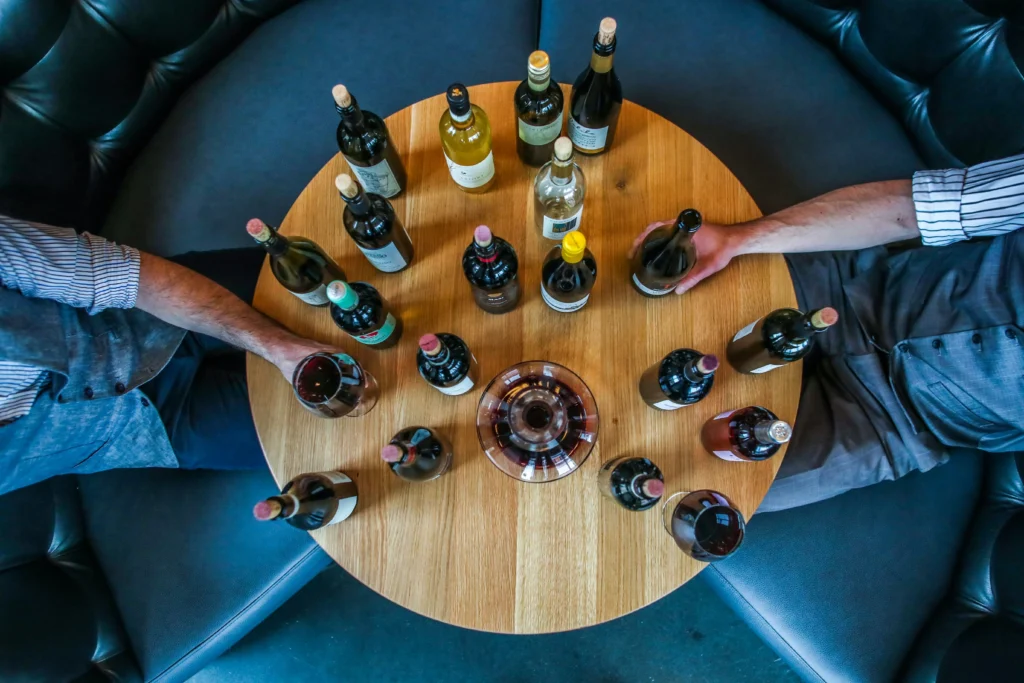
Casa Cavia
Possibly one of the most beautiful spaces to sit and relax, Casa Cavia is a blend of an antique garden, a grand manor, a winery, and Heaven. When drinking inside this house, surrounded by sunlight and fresh green leaves, the relaxation is so profound that this dining experience is hard to beat. As they state, Casa Cavia is a universe in itself, a place that exists neither in the past nor the present.
Their ample and luxurious cava is almost unmatched, and it has a Michelin stamp to prove it. The dishes might advocate for simplicity, but the wide range of grapes does not. But one thing is for sure: whether it is the food or the drinks, everything is local and seasonal, to ensure only the freshest taste.
Nilson Bar
In the historic neighborhood of San Telmo, Nilson Bar offers a unique wine-tasting experience within the iconic San Telmo Market. With its “vino al paso” (wine to go) concept, visitors can sample various wines while exploring the vibrant market scene. It’s a casual yet engaging way to enjoy Argentine wines and discover the perfect match to bring back home.
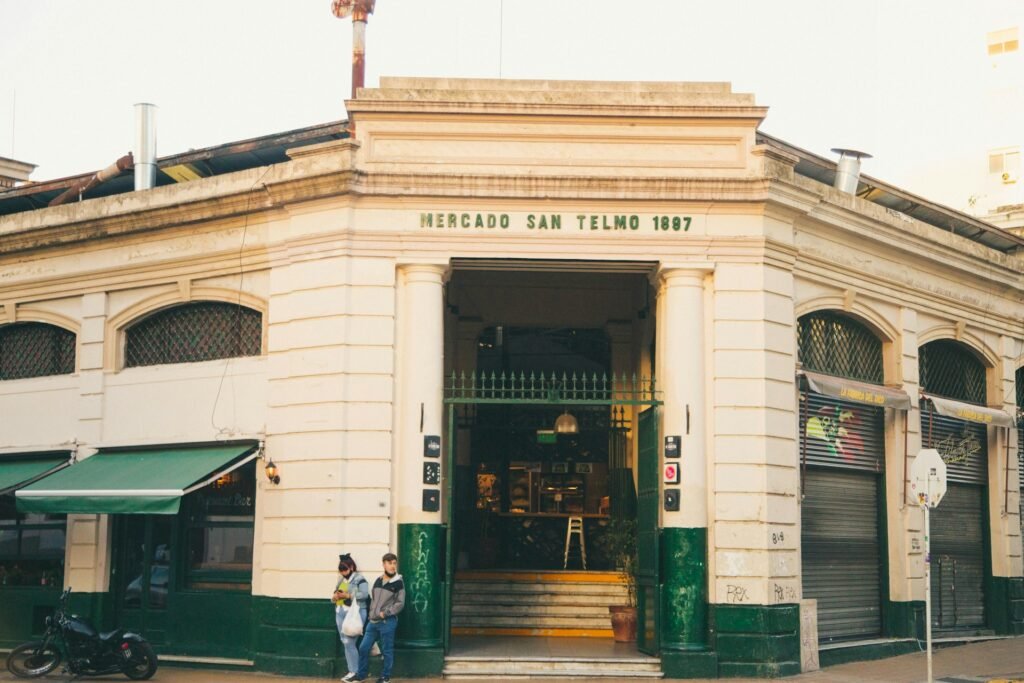
Are there non-alcoholic wines in Argentina?
Non-alcoholic wines are relatively new to Argentina and are not widely available. While some establishments might offer them, it’s safer to opt for a non-alcoholic beer, which is more common.
Are these places child-friendly?
Some wine bars, especially those in more residential areas like Anchoita and Naranjo, may welcome young families. However, as these venues focus on wine and food pairing, they might not be the most suitable environments for children.
What is the best way to serve Argentine wines?
Most Argentine reds, particularly Malbec, are best served slightly below room temperature, around 60-65°F (15-18°C). Whites like Torrontés and Chardonnay should be chilled to about 45-50°F (7-10°C). Decanting reds, especially aged Malbecs, can enhance their flavors and aromas, providing a fuller tasting experience.
